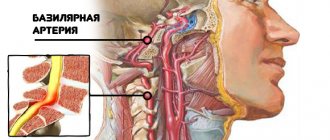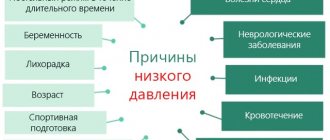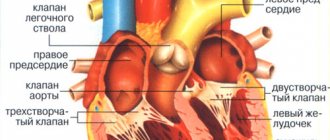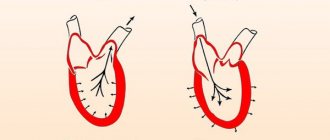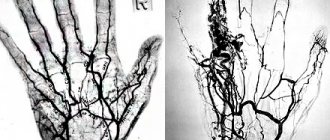Causes of nausea when pressure changes
Nausea does not always indicate a serious health problem. The cause of the condition may be toxicosis in a pregnant woman, poisoning with low-quality products, motion sickness after traveling in transport, or anemia. But if the problem recurs regularly and is accompanied by an increase or decrease in blood pressure (blood pressure), it is worth undergoing an examination and understanding the root cause of the disorder. The diagnosis and treatment regimen for this condition depend on the pressure at which you feel sick.
Most often, experienced hypertensive patients experience nausea, accompanied by vomiting, headache and tinnitus. The more severe the stage of the disease, the more pronounced these symptoms are when blood pressure jumps. When blood circulation in the brain is impaired, the vomiting center is irritated, and an adult or child begins to feel sick and vomiting appears.
Nausea with high blood pressure is most often caused by the approach of a hypertensive crisis. The person begins to panic, this leads to the release of cortisol and adrenaline, which provoke the growth of cerebrospinal fluid. Against this background, intracranial pressure increases, and there is a risk of cerebral hemorrhage. The body tries to cope with the serious condition by increasing urination and vomiting begins.
Additional symptoms of the disorder include lethargy, redness of the face and neck, and numbness of the extremities. If high blood pressure develops into a stroke, then nausea is accompanied by slow speech, deviation of the tongue when protruding to the side, dizziness, and severe headache.
Both in case of a stroke and a hypertensive crisis, it is important to seek qualified medical help as quickly as possible
Nausea with low blood pressure may indicate physical or nervous exhaustion or meteosensitivity. The symptoms are caused by strict diets, lack of sleep, stress, and lack of vitamins and microelements in the diet. But things don't always turn out to be so harmless. A feeling of nausea with low blood pressure may be a manifestation of internal bleeding and pathologies of internal organs. This symptom is also characteristic of true hypotension.
Signs and consequences of increased blood pressure
Not every person knows his individual blood pressure when he feels normal. But what consequences can occur when blood pressure rises? In medical practice, pathology associated with high blood pressure is called hypertension. This disease manifests itself differently in people of different ages.
Specialists at the Carnelian Medical Center in Novosibirsk noted the main symptoms of high blood pressure:
- regular feeling of coldness in the lower extremities. Swelling associated with cardiac and renal failure may occur;
- excessive heartbeat;
- frequent headaches;
- pain in the cardiac region;
- dizziness when turning or tilting the head;
- stable high blood pressure, which can remain unchanged during emotional changes.
The risk of high blood pressure may appear in elderly patients. The pathology can be inherited or due to head injury. Other risk factors are harmful working conditions and alcohol addiction, lack of sleep, intense physical activity, stress, symptomatic hypertension, thyroid and heart disorders, obesity, smoking, vegetative-vascular dystonia, etc.
How to get rid of a symptom of hypertension?
It is important to remember that a sharp decrease in pressure in such a situation can only worsen a person’s condition. What to do and how to help the patient before the doctors arrive? The set of medications that can be taken for hypertension and nausea consists of several types of medications. These include:
Headache with low blood pressure
- diuretics prescribed by a doctor;
- medications to lower blood pressure that the patient takes regularly;
- antiemetics;
- antispasmodics to eliminate spasms;
- painkillers that you can take for headaches.
If you feel nauseous and have a headache with high blood pressure, you need to provide the patient with rest. The person should take a relaxed position (half-sitting) and try to minimize any movements. A good solution would be a cold compress on the head and warming the feet with warm water. This increases the flow of blood to the legs from the head, and the pressure decreases slightly.
We must not forget about the flow of fresh air into the room. To do this, you can open the window slightly, turn on the fan or air conditioner. The clothes that tighten the chest and neck are unbuttoned. If your blood pressure is high, your readings should be measured every 15 minutes, and if the condition does not improve, take another dose of an antihypertensive drug.
Advice! Aromatherapy can be an additional help for nausea that accompanies high blood pressure. Wormwood or peppermint oil is good for calming, reducing the gag reflex and helping to reduce blood pressure.
Treatment of regular attacks
What to do during the next attack of dizziness is now clear. But what is the right thing to do if such symptoms occur on a regular basis? First of all, you need to visit a cardiologist to find out the cause of this condition. Depending on what provokes regular pressure surges in one direction or another, measures will be taken to relieve the condition, medications or physiotherapeutic procedures will be prescribed.
General principles of treatment when regular dizziness occurs due to high blood pressure or hypotensive crisis include the following algorithm of actions:
- Establish a daily routine and provide the body with proper rest. If a person is constantly lacking sleep, sleeps less than 7–8 hours a day, or suffers from chronic fatigue, dizziness will bother him not only during surges in blood pressure, but also simply throughout the day.
- Prevent the occurrence of stressful and conflict situations. As a result of constant nervous overstrain at work or at home, blood pressure levels can constantly increase or decrease. It is not without reason that doctors say that many diseases, especially hypertension, arise from nerves.
- Take the pills prescribed by your doctor. If a hypertensive patient does not follow the doctor’s instructions and only stop acute attacks of hypertension, dizziness and pain in the temples will become his constant companions. Arterial hypertension is a disease that requires constant therapy, and not occasionally.
- Do not overwork the body, providing it with adequate physical activity daily. It is better to carry out assigned tasks at home and at work slowly, without overloading the body physically and mentally, then it will be possible to ensure a stable blood pressure level.
- Eat properly. Hypertensive patients should exclude fatty and salty foods and drinks with a high caffeine content from their diet. Hypotonic patients should eat more protein foods. People with low and high blood pressure benefit from vegetables, fruits, lean meats and fish; such nutrition will help maintain normal body weight and provide the brain with oxygen.
If dizziness occurs regularly and is accompanied by fluctuations in blood pressure, it is a good idea to keep a diary in which to record each exacerbation. It is also necessary to record the circumstances preceding the crisis in order to analyze them and eliminate them in a timely manner.
How should a hypotensive person act?
The condition of low blood pressure and nausea can be caused by several reasons. For example, people who react sharply to changes in weather outside the window may suffer from the disorder. Taking certain medications can also cause a drop in blood pressure, nausea and vomiting. Heatstroke or sunstroke often cause discomfort in the stomach due to low blood pressure, severe weakness and increased heart rate. Such conditions do not pose a threat to life and pass rather quickly.
If the pressure drops sharply in a person who does not suffer from hypotension, then the cerebral blood supply decreases, which leads to disturbances in the functioning of the vestibular apparatus and provokes vomiting. Nausea with pressure below normal may indicate problems in the functioning of internal organs and requires mandatory examination. It is especially important to consult a doctor if this condition occurs repeatedly.
Hypotonic patients who suffer from low blood pressure regularly report nausea and vomiting against the background of a throbbing headache. This is due to changes in cerebral circulation characteristic of hypotension.
Other provocateurs of the condition include parasitic infections, radiation exposure, food poisoning, chemical poisoning, etc.
Whatever the reasons, the person should be helped. To do this you need:
- Place the patient horizontally. The legs should be higher than the head to ensure blood flow to the back of the head. If this is not possible, the person is seated with his head lowered between his legs.
- A great way to reduce nausea and stabilize blood pressure is to drink a cup of hot sweet tea.
- Medications that increase blood pressure should be prescribed by a doctor. But there are drugs that are most popular among hypotensive patients. These are “Caffeine”, “Dopamine”, “Dihydroergotamine”. If you have a headache and nausea with low blood pressure, the Citramon tablet will help.
With low blood pressure, a 15-minute massage of the fossa located above the upper lip will help.
Nausea at normal blood pressure
Your blood pressure is normal, but you start feeling nauseous regularly? There may be several reasons why you feel sick. They are:
- sudden change in body position;
- stressful situations;
- atmospheric pressure difference;
- staying in a stuffy room or transport.
This condition, if not regular, is not dangerous. However, if attacks become frequent and are combined with loss of consciousness, you need to make an appointment with a neurologist. Among the possible diagnoses in which nausea appears against the background of normal blood pressure may be the following diseases:
- disturbances in the functioning of the vestibular apparatus;
- vegetative-vascular dystonia;
- cervical osteochondrosis;
- arthritis;
- spasm of cerebral vessels;
- diabetes;
- brain tumor;
- increased intraocular pressure;
- anemia;
- diet or fasting.
Important! Only a doctor can make a conclusion about the cause of the disorder and draw up a treatment regimen with medications and physical procedures. Self-medication is unacceptable. It can cause a number of disorders and worsen the patient’s condition.
Diagnosis of dizziness
Diagnosis and treatment of dizziness is carried out by neurologists, vertebrologists, otorhinolaryngologists and ophthalmologists. In order to clarify the cause of dizziness, as well as prescribe the correct treatment, a patient with dizziness must undergo a series of examinations:
- Doppler ultrasound of the main arteries of the head;
- examination by an ophthalmologist;
- audiographic examination;
- CT (computed tomography) or MRI (magnetic resonance imaging);
- X-ray of the skull and cervical spine.
Prevention measures
You can avoid nausea with pressure only by following a number of rules that help normalize blood pressure. Moreover, the recommendations for hypotensive and hypertensive patients are similar. You need to do the following:
- Give up bad habits - when nicotine and alcohol enter the body, the risk of developing disorders of the cardiovascular system increases.
- Lead an acceptable active lifestyle - regularly engage in sports, the intensity of which depends on the initial diagnosis. For example, a hypotensive patient can run in the nearest park and visit the gym, while for an elderly hypertensive patient, the optimal exercise would be morning exercises or swimming.
- Minimize stress. Of course, it is impossible to completely eliminate unpleasant situations from life, but it is possible to reduce their number to a minimum and not neglect the sedatives recommended by your doctor.
- Adjust your diet. An excess of fried, spicy, salty foods affects not only your figure, but also your overall well-being. Having mastered the rules of balanced nutrition, you can strengthen your body, stabilize your blood pressure and forget about bouts of nausea.
The answer to the question of whether nausea can occur at low, high and normal blood pressure is relevant for many. And it is important to pay attention to this symptom and not let it take its course. It is quite possible that the attack of vomiting is provoked by a serious disorder, which can only be identified after a comprehensive examination.

